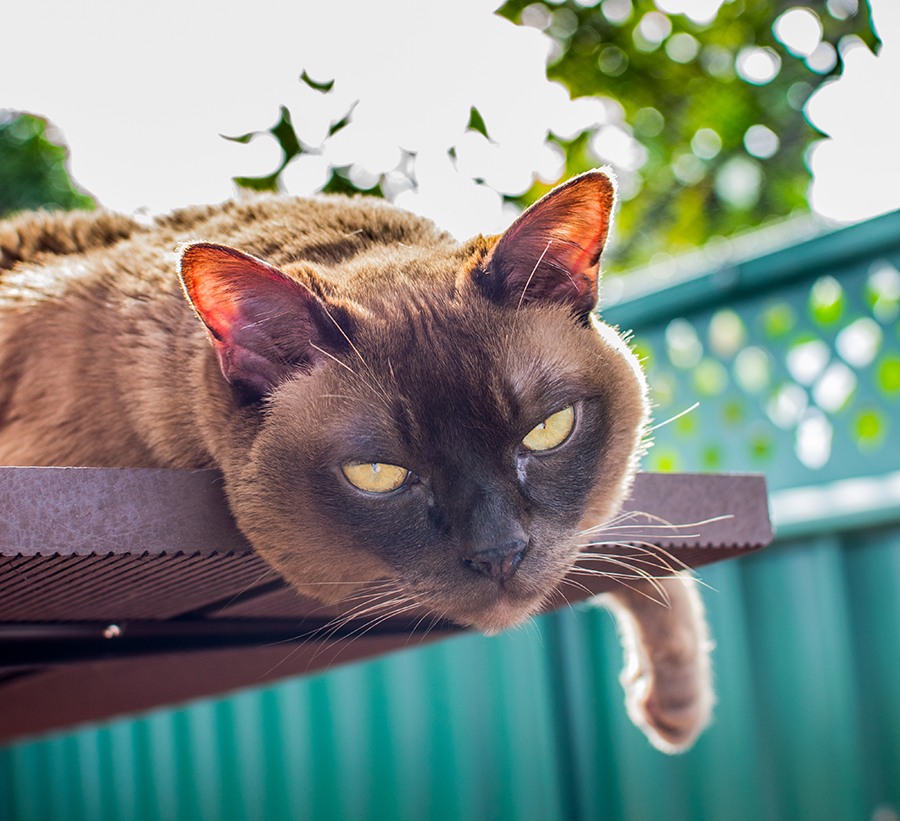Pain medication (NSAIDs) and your cat
A ‘painkiller’ known as a ‘non-steroidal anti-inflammatory drug’ (or NSAID) has been prescribed for your cat. These drugs are commonly used in humans and animals to help relieve pain, fever and inflammation – most commonly associated with degenerative joint disease. Controlling your cat’s pain is crucial for its welfare. Many cats greatly benefit from these drugs, having better mobility, less pain, increased appetite and an improved quality of life.
Degenerative joint disease (DJD) in cats
Degenerative joint disease (including osteoarthritis) is common, especially in older cats. As with other conditions, cats may mask the signs of this disease.
- Problems and behaviour changes in cats with DJD include:
- Decreased activity – e.g., sleeping more, not moving around as much, playing or hunting less
- Decreased mobility – e.g., reduced willingness to jump, not jumping as high, difficulty using the litter tray, stiffness, and sometimes obvious lameness
- Decreased grooming – reduced time or difficulty grooming, a poor coat, overgrown claws
- Altered personality – less keen to interact with people or pets, seeking solitude, “grumpier”
- Other signs – may include aggression or vocalisation when touched and loss of appetite
Understanding these changes helps alert you and your vet to the possible existence of pain and DJD, and will help you monitor whether therapy is helpful or not.
Are NSAIDs safe in cats?
NSAIDs play a vital role in therapy for many cats, but differences between cats and other animals mean you should only ever use a drug that has been specifically prescribed for your cat by your veterinarian. Many human drugs such as aspirin, ibuprofen and paracetamol can be highly toxic to cats – administering these is life-threatening. Adverse effects can be seen with NSAIDs, just as with all drugs. Some patients may be at increased risk of adverse effects (e.g., older cats and cats with certain other diseases). Your veterinarian may then recommend increased monitoring and careful adjustment of therapy to find the lowest effective dose of the drug for your cat.
What adverse effects should I look out for?
Licensed NSAIDs have been shown to be safe for use in cats. However, adverse effects can still occur. Most are mild, but some can be serious – as in other species they may involve the gastrointestinal tract, kidneys, cardiovascular system or liver. Adverse effects may lead to a number of signs including:
- Loss of appetite
- Nausea or vomiting
- Lethargy and dullness/depression
- Altered thirst and/or urination
- Diarrhoea and/or black-coloured faeces
- Yellowing of the skin, gums, or whites of the eyes
What do I need to know?
✔ Make sure you understand how much of the drug to give, how frequently, and for how long. If you are unsure, ask your veterinarian.
✔ Always read the label instructions on your cat's medication carefully. Many medications need to be shaken prior to use.
✔ Always give the medication with or after food. Your vet may suggest feeding canned rather than dry food to help encourage good fluid intake, as maintaining a good fluid intake is important.
✔ If your cat does not eat DO NOT give the medication. Contact your veterinarian.
✔ Talk to your veterinarian about what monitoring should be done to safeguard your cat – how frequently your cat should be re-examined, what blood and urine tests should be done, and how frequently these should be done.
✔ Never give your cat any other medication at the same time without first speaking to your veterinarian.
✔ If at any stage you have concerns, or see any potential adverse effects, STOP giving the medication and contact your veterinarian immediately.
Our Midland & Drovers Vet Hospitals are both accredited ISFM Cat Friendly Clinics.

The Cat Friendly Clinic programme is an internationally recognised assessment accreditation scheme which is open to any veterinary practice that cares for feline patients. There are certain requirements regarding design, equipment and facilities within the clinic, which must be met to achieve the standard. The clinic must also demonstrate that a high quality of care is provided to cats and that all staff understand cats and their needs in a clinic.
The benefit to the clinic is that not only will the scheme help to improve the clinical care of feline patients but may also increase the number of clients who are actively seeking a cat friendly clinic for their pet.




